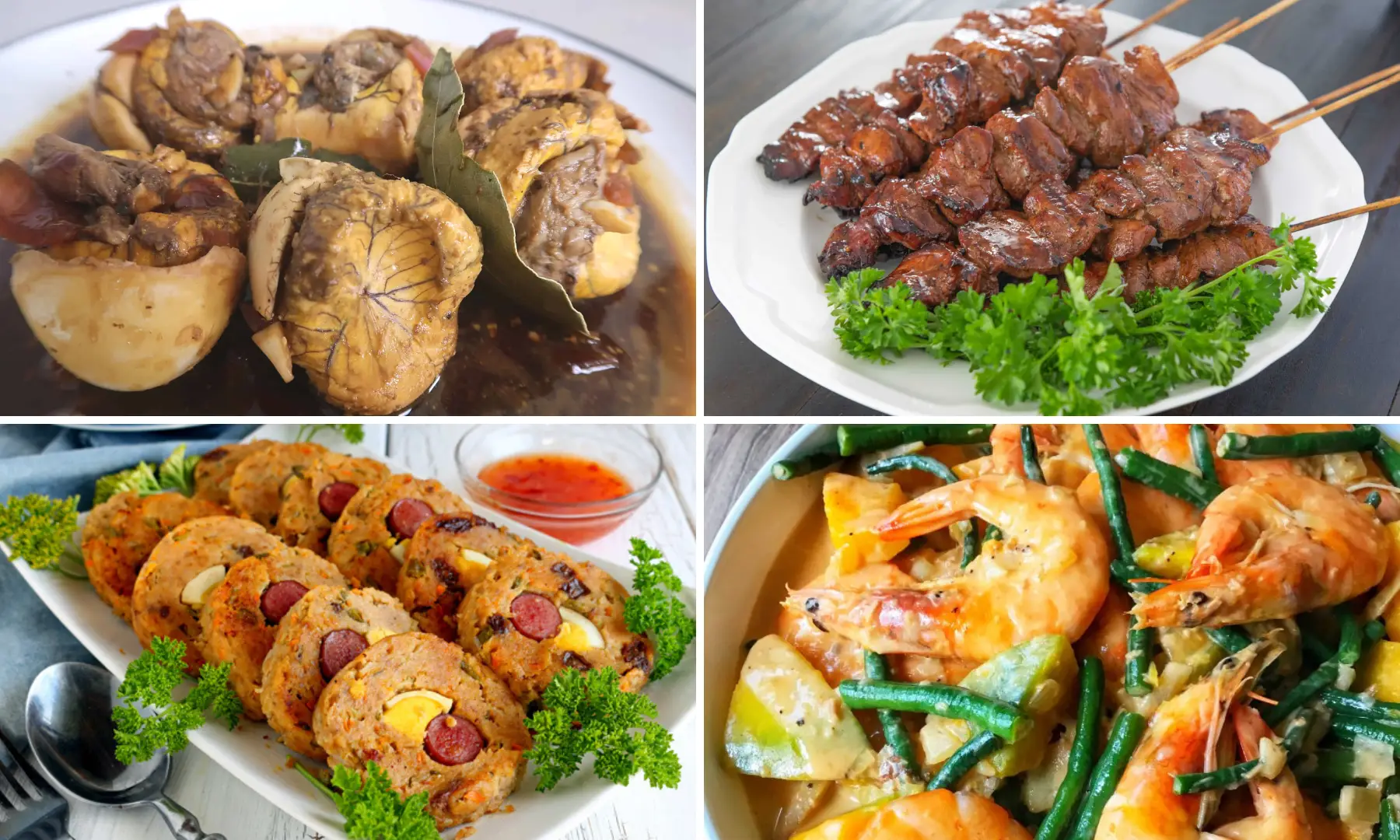Enjoy Typical Filipino Flavors With Easy-To-Follow Recipes
Discovering traditional Filipino food uses an one-of-a-kind possibility to involve with an abundant tapestry of tastes and cultural stories. As we check out these cooking practices, one might question exactly how to best bring the warmth of Filipino friendliness to their very own eating table.

Introduction of Filipino Cuisine
Discovering the dynamic tapestry of Filipino food discloses a rich social heritage influenced by various historical and geographical elements. The Philippines, an archipelago of over 7,000 islands, flaunts a varied range of flavors and food preparation strategies. The country's culinary landscape is shaped by aboriginal customs and the influences of emigration, trade, and migration. Consequently, Filipino food is a distinct mix of Malay, Spanish, Chinese, and American elements.
Rice serves as the keystone of Filipino meals, frequently accompanied by a selection of vegetables, meats, and seafood. Making use of strong flavors is a hallmark of the cuisine, with active ingredients such as garlic, onions, ginger, and soy sauce playing essential duties. Furthermore, the emphasis on public eating shows the Filipino culture of friendliness and family connections.
Street food also plays a significant duty in the cooking scene, showcasing local active ingredients and imaginative cooking methods. As the Philippines remains to welcome globalization, the fusion of conventional and modern influences can be seen in modern Filipino dishes, further enhancing its culinary identity. Filipino food recipes. On the whole, Filipino food is a testimony to the country's history, culture, and vivid spirit
Must-Try Traditional Dishes
Filipino food is best experienced with its conventional meals, each supplying an one-of-a-kind understanding right into the country's varied cooking heritage. Amongst the must-try dishes is Adobo, a full-flavored stew usually made with poultry or pork, marinaded in vinegar, soy sauce, and garlic prior to being slow-cooked to excellence. Its rich and tangy taste account stands for the heart of Filipino convenience food.
One more iconic dish is Sinigang, a sour soup typically prepared with tamarind, tomatoes, and numerous vegetables. This meal can feature pork, shrimp, or fish, and is treasured for its refreshing preference and heating qualities.
Lechon, an entire baked pig, is a focal point at Filipino celebrations, known for its crispy skin and tender meat. It symbolizes the joyful spirit of Filipino gatherings.
For those food craving something sweet, Halo-Halo is a delightful dessert combining smashed ice, sweetened fruits, jellies, and topped with leche flan and purple yam.
Each of these traditional dishes envelops the essence of Filipino society, welcoming anybody to relish the vivid tastes and abundant background that specify the archipelago's culinary landscape.
Step-by-Step Recipes
Cooking authentic Filipino recipes in your home can be an improving experience that brings the vibrant flavors of the Philippines right into your kitchen. With a browse around here plethora of typical dishes to select from, utilizing detailed recipes allows both beginner and skilled cooks to understand the methods and flavors indispensable to Filipino food.
Begin by picking a meal that intrigues you, such as adobo, sinigang, or lumpia. Each recipe frequently consists of a detailed active ingredient checklist followed by clear instructions, assisting you via the cooking process.
As you proceed, pay very close attention to food preparation techniques special to Filipino cuisine, such as sautéing (ginisa) or stewing (nilaga) These methods can dramatically improve the depth of flavor in your meals. Additionally, timing is important; follow the suggested cooking directory times to attain the ideal appearance and preference.
Essential Active Ingredients and Tips
Frequently, the key to understanding Filipino cuisine depends on understanding and using necessary components that define its distinct flavors. Central to many dishes are staples like soy sauce, vinegar, garlic, and ginger, which add to the distinct equilibrium of full-flavored, sour, and wonderful notes. Soy sauce acts as a base for sauces and sauces, while vinegar, specifically walking cane vinegar or coconut vinegar, passes on a zesty brightness that is vital in dishes like adobo.
Rice is a crucial component of Filipino dishes, often served alongside major training courses to soak up tasty sauces. For a touch of credibility, choose for jasmine or long-grain rice. Furthermore, utilizing fresh fruit and vegetables such as tomatoes, environment-friendly beans, and eggplants enhances the recipe's vibrancy and nutritional worth.
Do not forget the value of herbs and spices, such as bay leaves, lemongrass, and chili peppers, which boost the flavor account. When food preparation, keep in mind that persistence is crucial-- enabling components to combine with each other leads to richer flavors. Lastly, welcome the method of tasting as you go; this will allow you to change flavorings and attain the perfect balance that characterizes Filipino cuisine.
Offering and Taking Pleasure In Filipino Dishes
Comprehending the subtleties of Filipino food prolongs beyond prep work and components; it incorporates the method meals are served and enjoyed. The Filipino dining experience is identified by common sharing, promoting a sense of togetherness and party. Normally, meals are presented in large servings, enabling diners to engage in a variety of flavors.
Rice, a staple in Filipino dishes, is usually served as the structure upon Read Full Report which the various other meals rest. Coming with viands, such as adobo, sinigang, or lechon, are placed in the center of the table, welcoming visitors to offer themselves. Filipino food recipes. This method not only promotes an unwinded ambience yet additionally urges discussions and connections among diners

Conclusion
In final thought, conventional Filipino food uses a rich tapestry of tastes and cultural relevance, inviting expedition with its diverse meals. Involving with this lively cuisine not just improves the dining experience however also maintains and celebrates the heritage of the Filipino people.